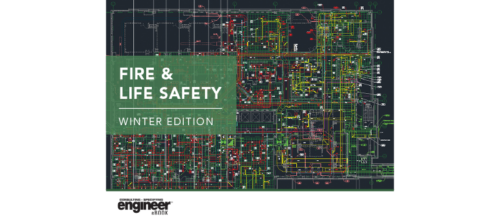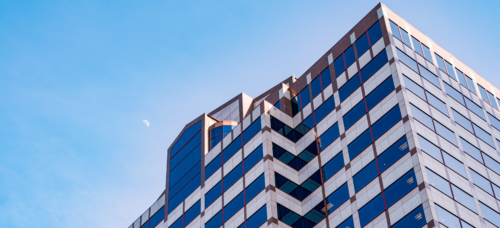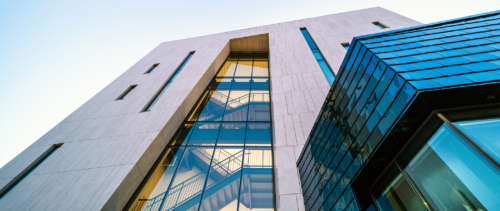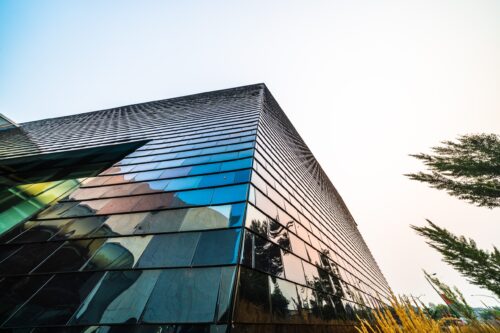Class A office building system design: Fire and life safety
Class A office buildings are among the toughest projects an engineer can work on—complex structures, demanding clients, and advanced technology. Fire protection engineers frequently face unique fire and life safety challenges.
Respondents
Daniel G. Dowell, VP Energy Performance Contracting Sales, ABM, Raleigh-Durham, N.C.
Kurt Karnatz, PE, CEM, HBDP, HFDP, LEED AP, President, ESD, Chicago
Lance Kempf, PE, Director of Mechanical and Electrical Engineering, LEO A DALY, Minneapolis
Brian Michelson, PE, MEP Design Phase Manager, Mortenson Construction, Minneapolis
Joseph H. Talbert, PE, ARM, Project Manager, Aon Fire Protection Engineering, Lincolnshire, Ill.
CSE: What unique fire suppression systems have you specified in Class A office buildings?
Talbert: Recently, the use of water-mist fire suppression systems has become popular in Europe. These systems require less water to extinguish a fire, but may require extremely high pressures (up to 2,500 psi). These systems require special piping systems, usually made of stainless steel.
Karnatz: In addition to the code-required sprinkler systems, there are several special fire suppression systems that are often specified for rooms with sensitive equipment in Class A office buildings. We often use a double-interlock pre-action sprinkler system in lieu of wet-pipe sprinkler systems for computer rooms, data centers, medium-density fiberboard rooms, and similar rooms where there is a concern for water-filled pipes above critical equipment. A double-interlock system is an empty-pipe system that requires both smoke/heat detection and a loss of gas pressure in the pipe to occur prior to system activation and discharge. The two events must occur prior to releasing of water into the pipe and out of the sprinkler system.
We use clean-agent suppression systems as a supplemental special suppression system in high-value content area. Generally, clean-agent systems are not recognized as substitution for the sprinkler system but rather an augmentation. A less commonly seen special-suppression system that may be used in a Class A office building is a foam-water pre-action or deluge system suitable for flammable and combustible liquid fires, such as those associated with a diesel emergency-generator room. We typically use foam-water systems on our Middle East projects as a common code-required local practice.
CSE: Describe any unusual detection, suppression, and notification systems you’ve specified in Class A office building projects. What drove the design?
Karnatz: We have designed many systems incorporating very early smoke-detection apparatus (VESDA) as part of the releasing of both pre-action and clean-agent systems. A unique twist is an application where a client, for budget reasons, needed a more cost-effective solution than a pre-action or clean-agent system for a small computer room. A VESDA was installed with the capability of notifying the client’s in-house engineer via text or e-mail when an early-warning smoke-detection event occurred. The lower thresholds of these systems can detect fires in the incipient stage sometimes hours before visible smoke and fire occurs, allowing early intervention and remediation.
Talbert: In the case of the use of a water-mist system in Europe, the owner of the building specified that this type of system was required. The concern was that the water damage that could occur if a traditional sprinkler system inadvertently operated was considered to be too great, so a water-mist system was considered to create less of a risk of water damage.
CSE: Describe unique security and access-control systems you have specified on Class A office building projects.
Karnatz: Aside from the typical card-access systems, our use of biometric access control in office buildings is becoming more widespread. These systems use face recognition and iris readers to grant access to the building and other spaces within. Occasionally, highly sensitive areas in office buildings are provided with fingerprint readers for more secured access. We expect to see the implementation of digital credentialing systems as the future standard. As this technology matures, it will become a mainstream component of the intelligent building.
CSE: What types of fire/life safety systems have you designed for high-rise Class A office building structures? Discuss elevator evacuation, refuge floors, etc.
Talbert: Class A offices in Europe, the Middle East, and Asia have some unique requirements for areas of refuge in the building as compared to U.S. codes. It is common in supertall Class A office buildings in some countries outside the U.S. to require portions of a floor, or even entire floors, to be dedicated areas of refuge at intervals of 20 to 30 floors. These areas of refuge are often complemented by evacuation elevators (often referred to as "lifeboat elevators"), which can be used to shuttle occupants from the refuge-area floors to the ground level. Egress simulations using these elevators are often required to determine the overall egress times from the building.
Karnatz: In our very tall building designs, we typically use fire water-storage tanks that feed gravity-supplied systems. This approach increases system reliability while simultaneously reducing cost. Fire alarm systems for high-rise buildings include two-way voice communication systems, notification appliances, detection devices, elevator-recall systems, and a fire command center. Both elevator evacuation and refuge floors impact the fire and life safety features of the building when implemented as part of the overall safety strategy.
The use of occupant-evacuation elevators is an optional evacuation method that is applicable to supertall buildings. Unlike standard elevators, which are typically recalled to the ground floor upon fire detection, the evacuation elevators enter an evacuation mode and are available for evacuation shuttle. The fire alarm system determines the evacuation zone (floors) and the pick-up priority based on where the fire was detected, and the elevators are then dispatched to those floors and drop occupants off on a safe discharge level. The refuge floors on the Kingdom Tower project in Saudi Arabia have fire command centers with the capabilities of the main fire command center at the ground level so that all conditions and communications can be managed from any of the refuge floors. All refuge floors are staffed and able to address, via a public address system, any floor of the building.
CSE: Outline compartmentation in a recently designed Class A building. What was unique to this design?
Karnatz: The refuge floors for a very tall Class A building that ESD designed use 2-hour compartmentation for the protection of the occupants on the refuge floor. In addition, the refuge floors are provided with mechanical pressurization to minimize the potential for smoke migration into the refuge area. Additional compartmentation features incorporated into the design included ducts that pass through the refuge floor, which served other areas to be separated by 2-hour construction, and mechanical rooms on the refuge floor serving only the refuge floor. The pressurization system for the refuge floor is activated by any fire-protection or alarm system within the building zones adjacent to the refuge floor. Pressurization fans are dedicated and located in 2-hour fire-rated enclosures. Stair and shaft compartmentalization and pressurization also is very important. The overall height of stairs and shafts is limited by stack-effect pressurization gradients. We actively work with the architect to determine the "break points" that will make pressurization work with the code requirements.
Talbert: Compartmentation in high-rise office buildings typically requires 2-hour fire-resistant floors and 2-hour fire-resistant stair and elevator shafts. However, in some supertall high-rise buildings, especially those outside the U.S., the country code may require 4-hour-rated floors at intervals of about 250 ft. In addition, stairways that pass through these 4-hour-rated floors may be required to be 4-hour-rated enclosures, and elevator shafts may also be required to be 4-hour-rated.
CSE: What unique smoke-control systems have you designed in a Class A office building? Outline the building structure and the smoke-control solutions.
Talbert: Smoke control can be far more stringent in areas outside the U.S. than U.S. codes require. The IBC, which is widely adopted in the U.S., typically requires only smoke control in atria more than 2 stories in height; however, it is not uncommon for codes outside the U.S. to require smoke exhaust from corridors over a certain length, from large, open offices and from rooms containing high-hazard operations. In addition, these codes may require stairway, elevator-hoistway, and elevator-lobby pressurization. The solutions may include natural ventilation, forced-air ventilation, and air injection into shafts.
Karnatz: The typical, code-driven, smoke-control systems include shaft/floor pressurization, smoke exhaust, and controlling smoke/fire damper operation. The approach to smoke control in case of fire on a floor in an office building is either by exhaust only or a "sandwich" where the fire floor is exhausted and the floor below and above is pressurized. This is often dictated by the client standard or local code authorities. In the case of the Al-Hilal project in Saudi Arabia, the sandwich approach was used. Because the building had a stair-pressurization system and was split into two vertical smoke-control zones, it became problematic to provide the sandwich at the interface of the two smoke-control zones. We used special shaft and damper arrangements to accomplish the correct pressurization/exhaust effect necessary to provide a safe and code-compliant system.
Do you have experience and expertise with the topics mentioned in this content? You should consider contributing to our CFE Media editorial team and getting the recognition you and your company deserve. Click here to start this process.





